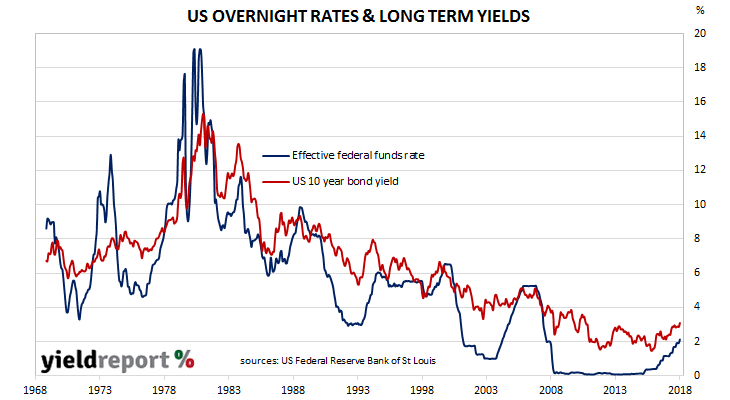The US Federal Reserve began raising its official interest rate, known as the federal funds rate, in December 2015. Prior to the first increase of this economic cycle, the federal funds rate had been in a range of 0.00% to 0.25%, usually somewhere close to the mid-point. It had been set in this range back in 2009 when the US had gone into recession after a disastrous property boom which was accompanied by massive speculation in the US mortgage market.
After 2015, the US Fed waited another year before it raised its official interest rate again in December 2016. However, since then, it has raised rates another three times; in March, June and now again at this latest Federal Open Markets Committee (FOMC) meeting.
The 25bps increase takes the target range to 2.00%-2.25% but the actual rate at which overnight lending between banks is typically at the mid-point of this range, at what is known as the “effective” rate.
 The increase was expected. Since mid-July, prices of US futures contracts had built in a very high probability of an increase at the September meeting. Minutes of previous FOMC meetings have referred to a need to gradually raise the federal funds rate, as well as noting the accommodative nature of the level of interest rates at the time. In conjunction with FOMC members’ “dot-plots”, markets had enough information to be confident of the path the federal funds rate would take over time.
The increase was expected. Since mid-July, prices of US futures contracts had built in a very high probability of an increase at the September meeting. Minutes of previous FOMC meetings have referred to a need to gradually raise the federal funds rate, as well as noting the accommodative nature of the level of interest rates at the time. In conjunction with FOMC members’ “dot-plots”, markets had enough information to be confident of the path the federal funds rate would take over time.

